Making waves: inside the Four Seasons Surf Club Miami

"Spectacular is the word for The Surf Club" ran a headline in the Miami Herald in November 1959. "Although some of the conservative set snub [it] as a glorified night club," gushed staff writer Betsy Buffington, "the Club itself makes no bones about what it is: an exclusive place to have FUN. There’s an aura of excitement about [it] – you never know what to expect next or which celebrity you may meet."
Founded by the tyre tycoon Harvey Firestone, The Surf Club opened at the northern end of Miami Beach on New Year’s Eve 1930 and was an instant hit. Prohibition may have prevailed elsewhere in the US, but rum runners from Cuba and the Bahamas ensured the bar here rarely ran dry, and so the likes of Douglas Fairbanks Jr came to party, establishing its reputation with Hollywood royalty.
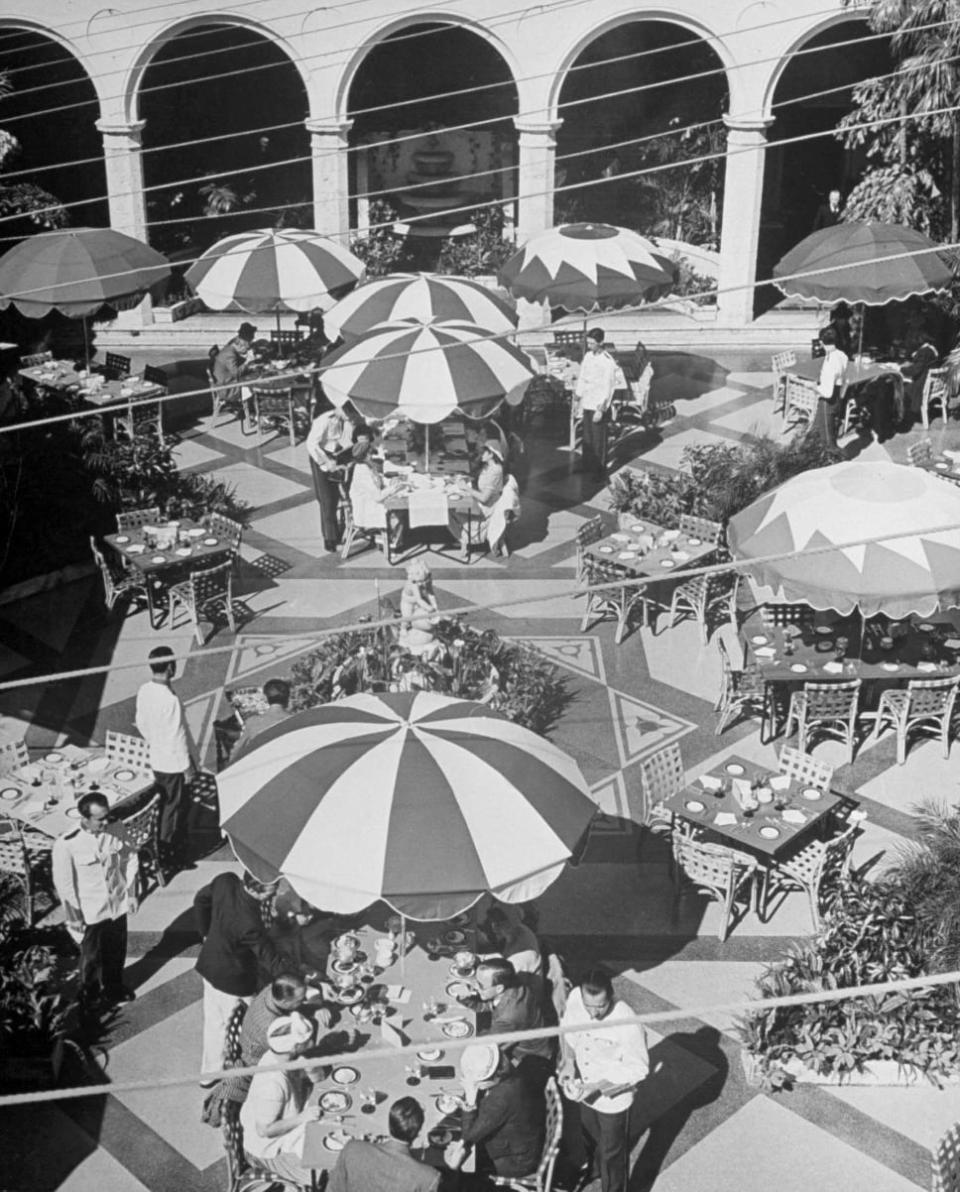
There are glorious photographs of former habitués by the entrance to the loggia known as Peacock Alley: Gary Cooper; Elizabeth Taylor; Frank Sinatra and Ava Gardner on their honeymoon… Actual nobility arrived too: the Duke and Duchess of Windsor, Shah Mohamed Reza and Queen Soraya of Iran, as well as Henry Ford, John Harvey Kellogg and Winston Churchill, who used to paint in one of two cabanas that he rented (the other was "for naps"), drawn to the place, he said, by the promise "of sun, solitude, something to eat and perhaps something to drink".
Late last month that "aura of excitement" returned when The Surf Club reopened after a five-year redevelopment as Four Seasons Surfside, a hotel, condominiums and private club. If the original coral-stone clubhouse was designed by Russell Pancoast in the "Mediterranean style" of the 1920s, the statement it makes now is altogether 21st century thanks to the substantial extensions by the architect Richard Meier: five monumental rectilinear glass blocks faced with transparent balconies that glitter in the sunlight (but will be a challenge to maintain given the salt-laden Atlantic breeze).
A central 12-storey tower rises out of what was the club’s courtyard and is cantilevered out over its tiled roofs so that it appears to float above them. This is where you’ll find the hotel’s 77 rooms (Four Seasons operates a further 28 residences in the adjacent blocks), each an essay in pale neutrals and greens by the French master of modern minimalism Joseph Dirand.
Best known for the boutiques he’s designed for Balmain, Balenciaga, Chloé, Givenchy et al, here he has managed to conjure a look that is at once contemporary yet redolent of The Surf Club’s golden age. I don’t know that I have ever stayed in a more beautiful, more artfully lit room than the standard Oceanfront I slept in.
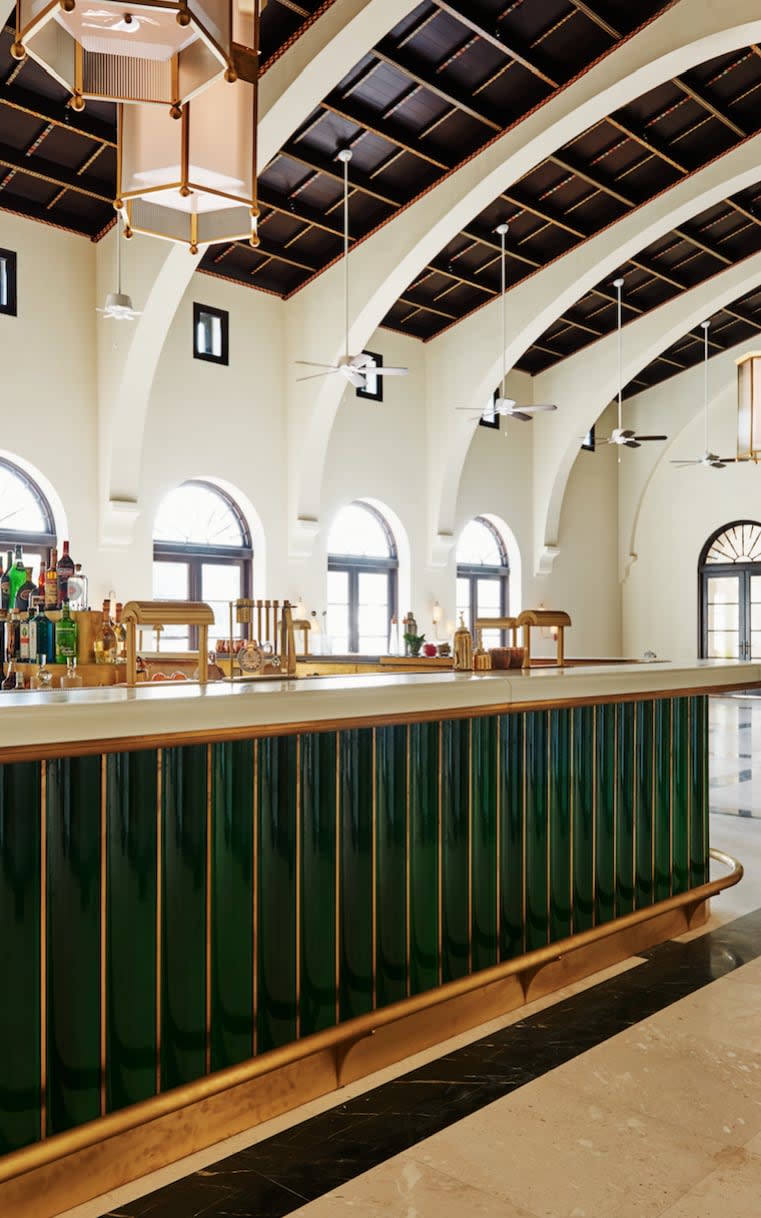
There’s an ingenious interplay of textures in the materials: the fluted plaster moulding on the white walls; coarse canvas on the top of the otherwise multi-faceted credenza; rattan panels on the cupboard doors; a crackle-glaze on the swivelling table that rises on a brass pole by the L-shaped travertine-faced window seat, from which a desk is cantilevered.
The tiny but effective reading lamps set into the suede bedhead are brass, a metal Dirand uses throughout the scheme, polished and brushed. The pale marble bathrooms are no less thoughtfully planned: the shower, for instance, has been positioned with a view of the sea.
Indeed I preferred it to the larger Premier corner rooms with their wraparound balconies, and the five cabana studios, the most retro category on the inventory (green terrazzo floors and cane armchairs) and also the most expensive (from $1,054). They may have spacious sea-facing verandas and proximity to the beach, but the rooms themselves are small and rather dark.
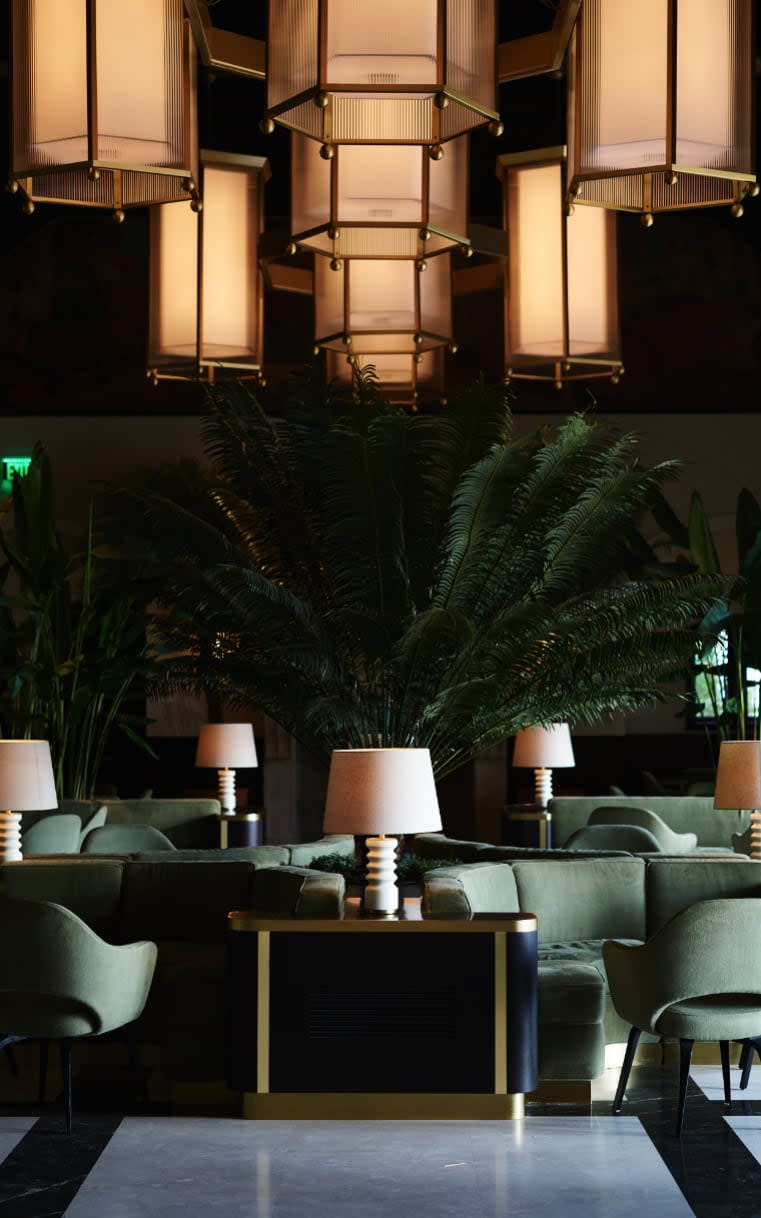
Dirand has designed the restaurant and champagne bar too, which occupy the very heart of the old Surf Club and represent another first insofar as they are the creation of Antonio Sersale, the delightful proprietor of Le Sirenuse on the Amalfi Coast, his first venture outside Positano, where his restaurant, La Sponda, has a Michelin star.
Dine at the original, and you cannot fail to be struck by the trailing greenery that is trained each spring up the walls and across the vaulted ceiling, nor by the flattering light from 400 candles. Here the space has become a sort of ne plus ultra of palm courts. And though the table lamps here may have LEDs not flames under their little shades, each has been individually tempered with a bespoke roseate gel to ensure the light it casts is flattering. All evidence of an attention to detail that applies equally to the refined southern Italian cooking.

Towards the end of the year, a second restaurant, this time the creation of Thomas Keller of French Laundry and Per Se fame, will open to the right of the entrance, in a space designed by Martin Brudnizki.
"Our restaurants used to be geared to serving hotel guests, but now we want them to be a dynamic part of the community too, part of a scene that feels exciting," says J Allen Smith, president and CEO of Four Seasons, when we meet at the company’s second newest opening, Ten Trinity Square, converted from the imposing 1922 beaux arts former headquarters of the Port of London Authority, near Tower Bridge.
"Food and beverage has become branded in a way it never was in the past. You have celebrity chefs and chains with global reputations consistent with luxury hotels. Many of our guests are looking for that experience."

It’s an ambition that is paying dividends. Ten of Four Seasons’ 105 hotels now have restaurants with one or more Michelin stars. And it is surely only a matter of time before La Dame de Pic at Ten Trinity Square wins at least one.
Its chef, Anne-Sophie Pic, is the only woman in the world to have won three Michelin stars for her Paris restaurant, and there is certainly a buzz. On a Tuesday lunchtime there wasn’t an empty table in the 78-cover room, designed by Bruno Moinard of Paris-based 4BI, as a succession of alcoves and booths with a striking central chandelier.
I was less taken with the rooms. A Superior double for a night midweek costs £575 (£635 with breakfast). For that you get a grey-walled room of modest size (28sq m), and a bathroom with just a shower and no tub. The only window overlooks the Novotel next door.
Not that Four Seasons was traditionally a brand associated with great design. Rather it is, says Smith, "the service delivery that sets us apart. Of course the hardware really matters. But all it takes to build a luxury hotel is a lot of money". (No one would tell me what was spent on The Surf Club, but $700m was mooted more than once.) "But the letters I get from our guests almost never talk about the hardware."
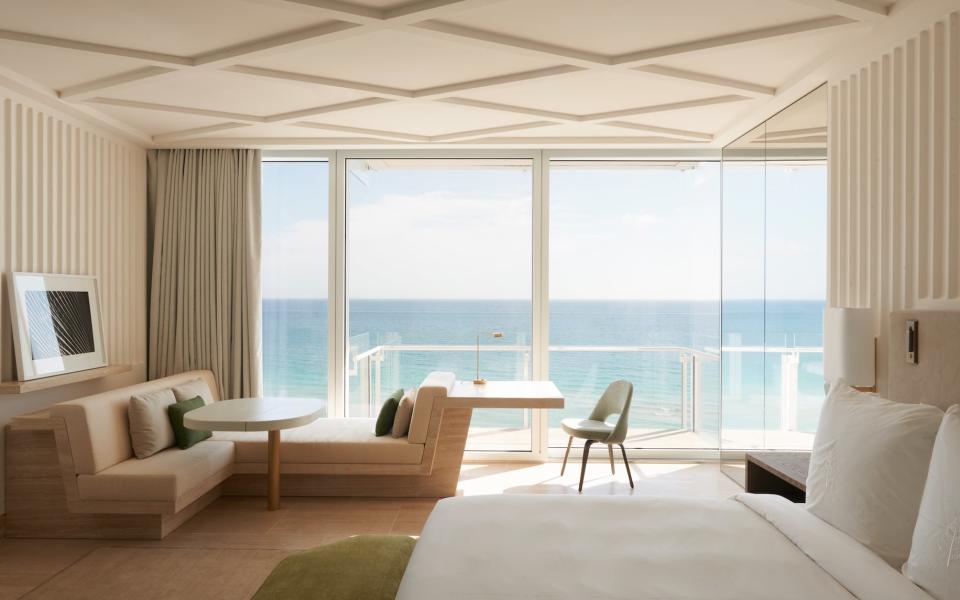
Hence Four Seasons’ "golden rule", which he defines as "treating the guest as you would want to be treated yourself. Some of the situations our staff find themselves in are joyous. But some are extraordinarily sad. There’s no guide that tells you what to say when, for example, someone has lost their spouse. [And people do die in hotels.] There isn’t a rule book. And to see how they react in these circumstances… It takes an exceptional level of emotional intelligence to deal with such situations."
Until he joined Four Seasons in September 2013, Smith had no first-hand experience of the management side of the hospitality industry beyond having trained in hotel administration at Cornell University in the mid-1980s (his first degree was in sociology), during which time he interned with Four Seasons in Chicago. In the end, he "chose a different career path", spending 26 years at Prudential Real Estate Investors, the past five as CEO.
In this respect he’s unusual. Historically the Four Seasons way has been to promote its senior staff and general managers from within. "That is absolutely what we’re focused on," he says. "With all the change in leadership we’ve had, we’ve managed to continue to elevate individuals within the organisation to fill those positions with home-grown talent."
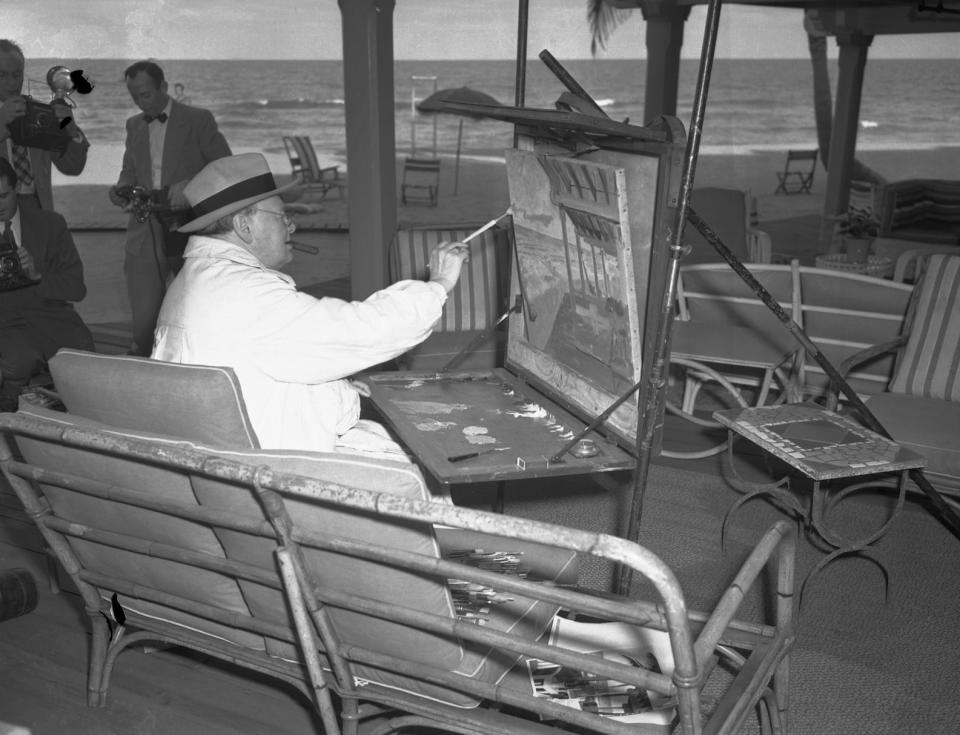
Even in a year like 2016, which saw the departure of both its chief operating officer and president of global product, among several senior staff, and a record nine hotels added to its inventory. It’s a rate of growth that shows no sign of slowing.
"This year we’ll probably open six or seven," Smith says, reeling off names: Tianjin, China’s fourth largest city, opened in January; Surfside in March; next Kuwait; then Megève in the Alps and Tunis should follow. São Paulo, Philadelphia and Boston are mooted for 2018. There is no standing still in this business.
"Part of the challenge is to constantly curate the portfolio," says Smith. So he’s prepared to shed properties as well as acquire them if the owners don’t appreciate "the need to reinvest in the product on a fairly regular basis".

"Since I joined three and half years ago, we’ve left eight," he says. And added 14. Among last year’s additions was one in Anguilla, where Four Seasons assumed management of the Kelly Wearstler-designed hotel that began life as the Viceroy; Vietnam, where it took over the Nam Hai, strikingly designed by the French-Algerian architect Reda Amalou and originally part of Adrian Zecha’s GHM group; and lower Manhattan, where Four Seasons New York Downtown occupies 38 floors of the 82-storey 30 Park Place.
Its rooms were designed by Yabu Pushelberg; its restaurant, a branch of Wolfgang Puck’s Cut, by Jacques Garcia. Add to these the spectacular Surf Club and the news that the existing hotel in Palm Beach, Florida, is about to be remodelled by Martin Brudnizki, and one can’t help suspecting that Four Seasons might in time become as esteemed for its design as it has been for its service.
An Oceanfront room at Four Seasons Hotel at The Surf Club costs from $832; fourseasons.com

 Yahoo Finance
Yahoo Finance